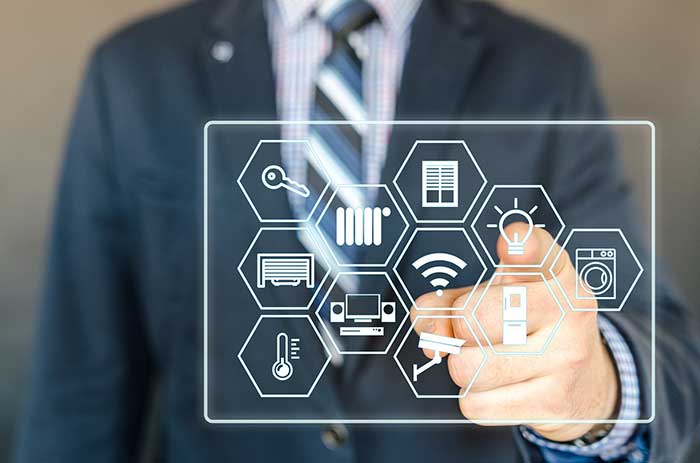
Energy-saving smart lighting solutions for Modern Tech Enthusiasts
Share
In an era where energy efficiency is paramount, energy-saving smart lighting solutions have emerged as a significant player in the quest for reduced energy consumption. As tech professionals and enthusiasts, understanding these solutions becomes essential, not only for environmental reasons but also for economic and technological advancements. Smart lighting not only cuts down on energy use but also integrates seamlessly with IoT to provide convenience and customization.
Smart lighting systems utilize the principles of automation and IoT to deliver optimal lighting while minimizing energy wastage. By leveraging sensors, smart bulbs, and central control systems, these solutions adapt to user behavior and ambient light levels, ensuring lights are only used when necessary. This article explores the intricate workings of these systems, their benefits, and the future they hold.

The Mechanics of Smart Lighting
Understanding the mechanics behind smart lighting requires a dive into the integration of IoT devices and intelligent control systems. These systems often include components such as motion sensors and daylight sensors, which play a pivotal role in determining when lights should be on or off. For instance, motion sensors detect movement and can activate lights in occupied spaces only. Meanwhile, daylight sensors measure natural light and adjust artificial lighting accordingly.
Moreover, smart bulbs are at the heart of these systems, capable of changing color, brightness, and even temperature. These bulbs connect to central hubs or directly to smartphones via apps, allowing users to control them remotely. This connectivity is a cornerstone of smart lighting, enabling users to customize settings, schedule lighting, and even integrate with other smart home devices for a cohesive environment.
Benefits of Energy-saving smart lighting solutions
The benefits of adopting energy-saving smart lighting solutions are manifold. Firstly, there's a significant reduction in energy costs. Smart lighting systems are designed to be efficient, using LED bulbs that consume less power than traditional incandescent bulbs. The ability to control lighting remotely means lights are not left on unnecessarily, further conserving energy.
Additionally, smart lighting contributes to enhanced security. By automating lights, homeowners can simulate occupancy even when they're away, deterring potential intruders. Smart lighting also enhances the ambiance of a home, with customizable settings that allow for mood lighting and specific scenes for different activities.
For those interested in the bigger picture, smart lighting is a key component of sustainable living, aligning with trends in green technology. By reducing energy consumption, smart lighting helps lower carbon footprints, contributing to broader environmental goals. More insights into sustainable IoT solutions can be found in this [sustainable IoT security solutions](https://iottechnologies.io/blogs/our-latest-posts/sustainable-iot-security-solutions) article.
Challenges and Considerations
While the benefits are compelling, there are challenges and considerations associated with implementing smart lighting solutions. One primary challenge is the initial cost. Smart lighting systems and devices can be more expensive than traditional lighting solutions. However, the long-term savings on energy bills often justify the upfront investment.
Another consideration is the complexity of setup. Integrating smart lighting into an existing home network requires some technical know-how. Users need to ensure compatibility between devices and may need to invest time in setting up and customizing their systems to match personal preferences and schedules.
For tech professionals, staying informed about the latest trends and technologies in smart lighting is crucial. Whether it's newer, more efficient bulbs or advanced IoT integrations, keeping up with innovations ensures optimal use of these systems. For more on staying up-to-date with technology, visit [advanced living solutions](https://advancedlivingsolutions.com.au/home-automation-and-the-environment-saving-energy-and-money/).
The Future of Smart Lighting
The future of energy-saving smart lighting solutions is promising, with continuous advancements in technology and increasing adoption rates. Future developments are likely to focus on enhanced integration with other smart home devices, improved energy efficiency, and further reduction in costs.
Emerging trends suggest a movement towards fully autonomous lighting systems that require minimal human intervention. These systems would rely heavily on AI and machine learning to predict and respond to user needs and environmental changes in real-time.
Furthermore, as more households and businesses adopt smart lighting, there's potential for broader implications on energy grids. Smart lighting can contribute to smarter energy management at a macro level, helping to balance supply and demand more effectively. For insights into the larger impact of smart home technologies, check out this [green technology](https://greenly.earth/en-gb/blog/industries/everything-you-need-to-know-about-green-technology-in-2022) article.

Conclusion
In conclusion, energy-saving smart lighting solutions represent an exciting frontier in both technology and sustainability. As tech professionals and enthusiasts, embracing these innovations not only enhances personal and professional spaces but also contributes to a more sustainable future. By understanding the mechanics, benefits, and future possibilities, we can better integrate these solutions into our lives and work towards a brighter, more energy-efficient world.
FAQs
What are the primary components of smart lighting?
The primary components include smart bulbs, sensors (such as motion and daylight sensors), and a control system or app for managing the lighting settings.
How do smart lighting solutions contribute to energy savings?
They reduce energy consumption through efficient LED bulbs and by ensuring lights are used only when necessary, thanks to automation and sensor integration.
Are there any security benefits to smart lighting?
Yes, smart lighting can enhance home security by automating lights to create the appearance of occupancy, deterring potential intruders.
